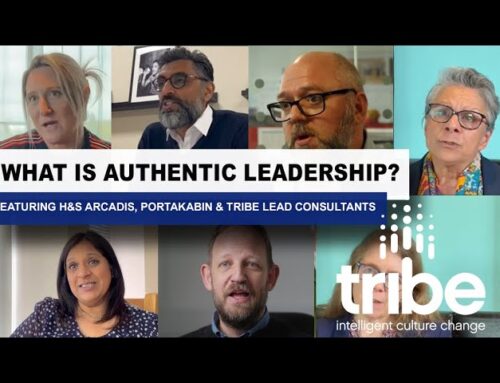The right safety vision serves as a guiding light, rallying employees around a shared goal and inspiring collective action. However, crafting a truly effective safety vision requires more than just words on paper—it demands clarity, resonance, and genuine buy-in from leaders.
Tribe’s lead consultant Steve Beswick has crafted a seven-point checklist to help you evaluate whether your safety vision (new or old) is developing along the right lines…
- Can people quote it back at you?
Visions can be as obvious as you like, plastered everywhere on-site. But if it hasn’t permeated the organisation’s collective conscience a reasonable time after its launch, then it’s time to go back to the drawing board.
- Is it reasonably short and punchy?
While there isn’t a hard and fast rule, the vision needs to be succinct and snappy – so roughly between 15-20 words. That not only makes it memorable, it makes it repeatable so it gets shared. Its brevity contributes to the psychological effect of a sticky message.
- Does it mean something to people?
This might sound like a lofty challenge – choosing a vision that inspires everyone, no matter where they work and at what level.
A good vision will include:
- A clear goal: what the end designation looks like.
- Strong motivation: what we will get out of it.
- Unambiguous guidance: what we need to do to achieve it
- Where did it come from?
Ideally you’d do a vision from the bottom up, do focus groups and go through several iterations. In reality, visions often begin above. So at least give your workforce a say on the various ideas and options, before you try to sell it back to them.
If your vision came out of nowhere from a boardroom on high, with no involvement from below – don’t expect it to stick.
- Is it worthwhile believing in?
Sad but true, people are bombarded all day long with messages telling them what to do (and not to do), so you’ve got to answer the question ‘what’s in it for me?’ quickly – what’s the desirable result if people buy into the vision.
- Does it contain stats?
There’s a time and place for statistics, but your vision isn’t one of them. Keep it free of numbers. It’s a picture with emotional attachment, remember.
Numbers are cold and hard with no room for imagination. They don’t put fire in people’s belly. Use them as supporting evidence, but not for getting people emotionally invested.
- Does it sound like everyone else?
No doubt you already aspire to be a world-class leader in doing whatever it is you do, but then so do your rivals. Safety is more personal and virtuous than hard-nosed commercial goals, so be sure to keep your vision human-centred and caring – as every effective organisation should aspire to be.





